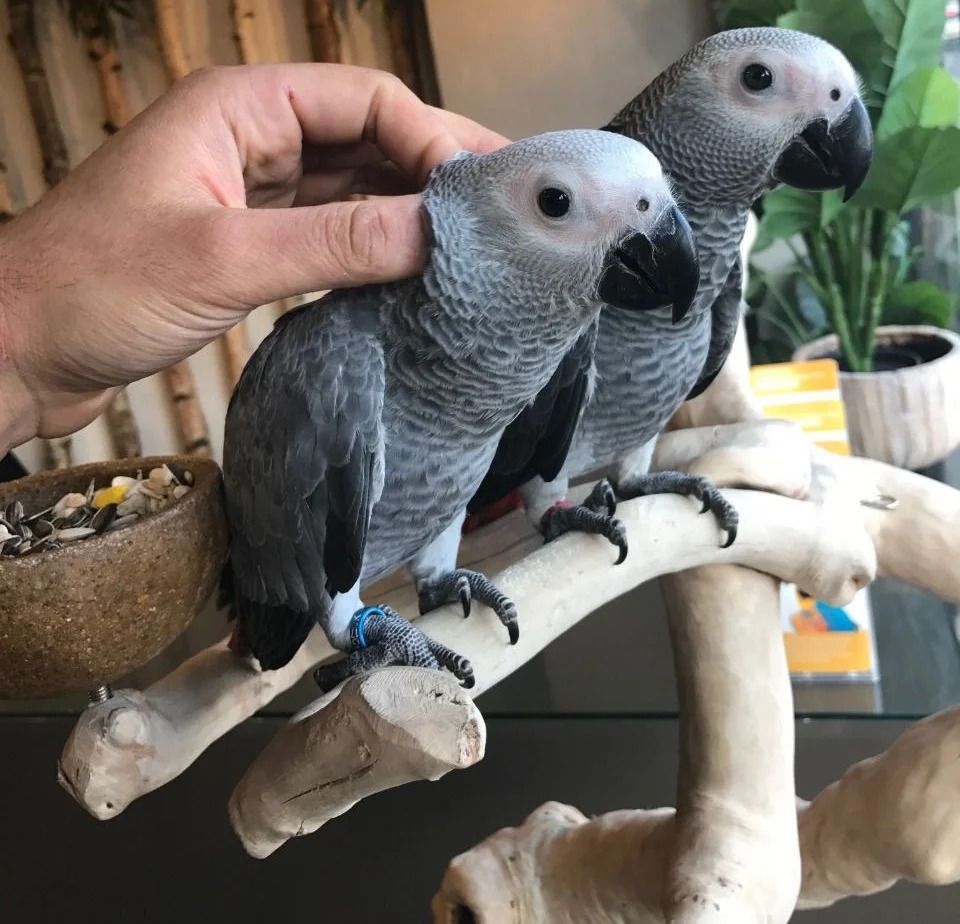
About Me

The Grey African Parrot: An In-Depth Look at One of Nature's Most Intelligent Birds
The Grey African Parrot, renowned for its intelligence, social behavior, and remarkable capability to imitate human speech, has actually captured the hearts of bird lovers and pet owners alike. Belonging to the rain forests of West and Central Africa, these fascinating birds have made their location as one of the most popular pet bird species worldwide. This article explores the special characteristics, environment, care requirements, and behavioral characteristics of the Grey African Parrot, offering a comprehensive introduction for prospective owners and bird enthusiasts.
Qualities of the Grey African Parrot
Distinguished by its striking gray plumes and brilliant red tail, the Grey African Parrot (Psittacus erithacus) possesses undeniable charm. These birds usually measure in between 12 to 14 inches in length and weigh around 400 to 600 grams. Their most prominent feature is their excellent beak, which is completely adapted for splitting nuts and seeds.
Physical Attributes
| Associate | Description |
|---|---|
| Size | 12 to 14 inches (30 to 35 cm) |
| Weight | 400 to 600 grams (14 to 21 oz) |
| Color | Gray body with a brilliant red tail |
| Life expectancy | 40 to 60 years in captivity |
| Beak | Strong and curved, suited for splitting seeds |
Habits and Intelligence
Grey African Parrots are not just stunning but likewise extremely intelligent. Their cognitive capabilities rank among the highest of all avian species. With the capability to find out a huge range of words and expressions, these parrots have actually influenced numerous research studies in animal intelligence.
- Simulating Ability: Grey African Parrots are understood to simulate sounds, voices, and even family sounds. They can discover approximately 1,000 words or expressions, making them extraordinary companions.
- Social Interaction: These parrots are extremely social creatures, prospering on interaction with people and other birds. They require consistent social engagement to keep their joy and psychological health.
- Problem-Solving Skills: Their problem-solving capabilities are significant. Grey african blue parrot for sale Parrots exhibit behaviors that suggest they can comprehend domino effect, as well as take part in intricate play.
Environment in the Wild
In their natural surroundings, Grey African Parrots are generally found in the thick jungles of Central and West Africa. They tend to live high in the canopy, living in big flocks that forage for food together. Their diet primarily consists of fruits, nuts, seeds, and berries.
Preservation Status
The population of Grey african grey parrot care Parrots is declining due to environment loss and the prohibited pet trade. The International Union for Conservation of Nature (IUCN) classifies them as threatened, highlighting the urgency of conservation efforts.
Taking care of a Grey African Parrot
For those thinking about adding a Grey talking african grey parrot for sale Parrot to their household, understanding their care needs is important. Grey african grey parrot eggs for sale Parrots need a stimulating environment, appropriate nutrition, and social interaction to prosper.
Real estate Requirements
- Cage Size: A big, roomy cage is needed, ideally measuring a minimum of 24 inches large, 24 inches deep, and 36 inches high. Providing a lot of space for movement and exercise is important.
- Perches and Toys: Include numerous perches at different heights and a variety of toys to keep them entertained and engaged. Toys ought to be safe and resilient, made from natural products.
- Safe Environment: Ensure that the living area is free from hazardous compounds like lead and zinc, as these can be hazardous to birds.
### Diet
A balanced diet plan is fundamental to the health of a Grey African Parrot. Here's a list of appropriate food products:
- Pellets: High-quality, nutritionally well balanced pellets should make up the bulk of their diet plan.
- Fresh Fruits and Vegetables: Offer carrots, spinach, apples, and bananas as healthy deals with.
- Nuts and Seeds: These should be offered in moderation, as they are high in fat.
Health Care
Routine visits to a bird vet are essential for making sure the bird's long-term health. Routine check-ups help catch potential health problems early.
Behavioral Traits
Comprehending the behavioral traits of a Grey African Parrot is important for promoting a positive relationship between the bird and its owner.
- Vocalization: They are naturally loud birds that will vocalize frequently. Owners ought to be gotten ready for their noisy nature.
- Boredom and Attention-Seeking: Left alone for extended periods, these parrots can establish behavioral problems due to monotony. It's necessary to engage with them daily.
- Bonding: Grey African Parrots often form strong bonds with their caretakers. Structure trust and friendship will boost their quality of life.
FAQs
1. How long do Grey African Parrots live in captivity?
Grey African Parrots can live anywhere in between 40 to 60 years in captivity, making them a long-term commitment.
2. Are Grey African Parrots great pets?
Yes, they can make exceptional family pets for the right owner, particularly those who can devote time to social interaction and psychological stimulation.
3. Just how much do Grey African Parrots cost?
Costs differ widely based on age, reproducing, and area, ranging generally from ₤ 1,000 to ₤ 3,500.
4. Do Grey African Parrots require a great deal of attention?
Yes, they are extremely social birds that require daily interaction and stimulation.
5. Can Grey African Parrots be trained quickly?
Due to their high intelligence, they can be trained with persistence and positive reinforcement techniques.
The Grey African Parrot is a remarkable bird understood for its intelligence, sociability, and sensational appearance. While they can make loving and appealing companions, possible owners should understand their care requirements and dedicate to supplying a revitalizing environment. By acknowledging these stunning birds' needs and conservation status, people can add to the well-being of both their family pet and the species as a whole.

Location
Occupation

